Freezing Inferno, Hotness from Princeps Games
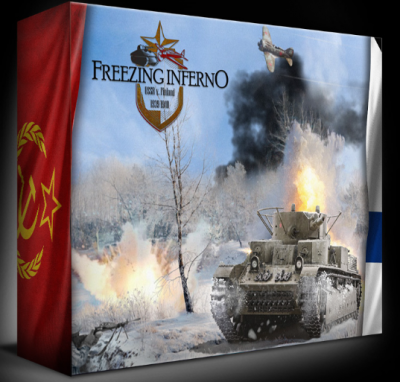 By Mitch Reed
By Mitch Reed
Recently the folks from Princeps Games in Serbia sent me a copy of their latest design, Freezing Inferno which covers the 1939-1940 Soviet-Finnish War.
I thought the topic of the game was unique and I am a big fan of their previous title, March on the Drina, which covers the Central Powers’ attack on Serbia during the Great War.
Recently I have been playing a lot of games from small European designers and am starting to love the work they do.
I posted pictures of the game when I got it, and I was so impressed by the production value of the game. The double-sided map is a work of art, The counters are thick and big. The game comes with these great cardboard boxes in which to keep your counters, cards, dice and all the other components of the game.
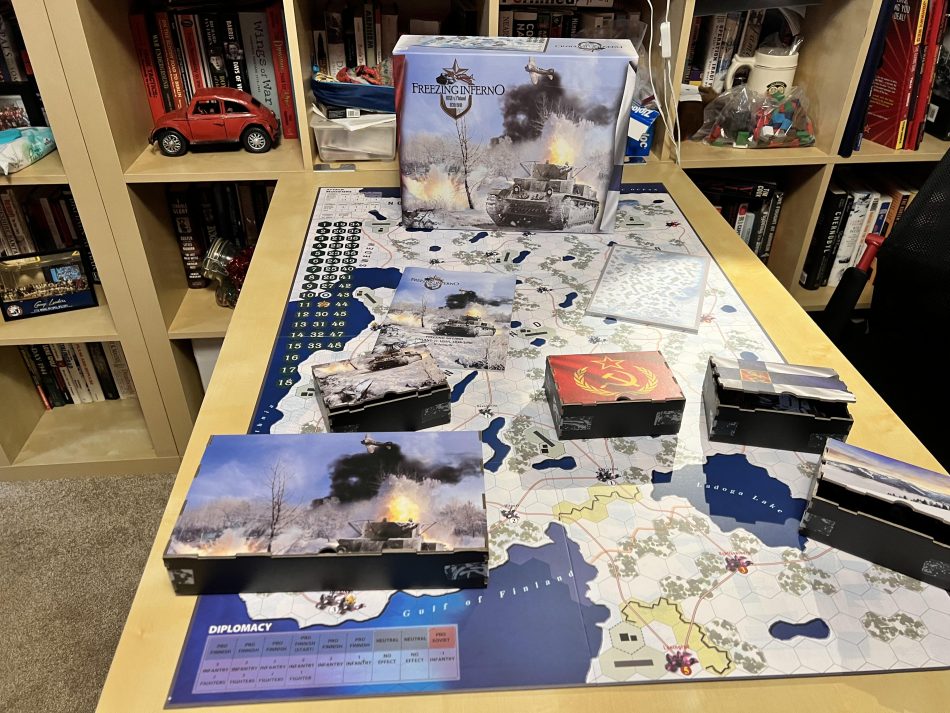
Many European game developers are crushing it when it comes to game components. This attention to detail is slowly setting them apart from US game manufacturers. Gamers are a hard bunch to please, however, they do appreciate the nicer components and great artwork. Over the last five years, some US publishers have embraced this as well, however on the other side of the pond it has become a way of life, and these smaller developers are really making a splash in the marketplace.
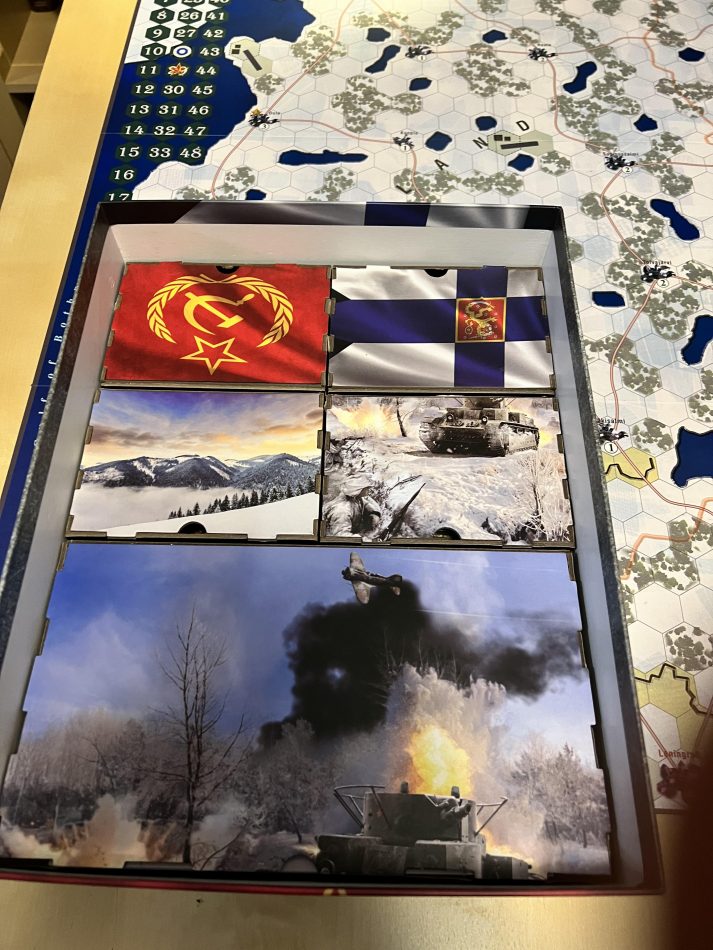
Along with better bling, these companies are also making tight and interesting games. Freezing Inferno is no exception. As I played it, I realized it was deeper than I expected.
In the game you can assume the role of the Finnish or Soviet commander and in some ways the overall leadership of their respective nations.
While the base game covers military conflict the game also has a diplomacy module, which is almost a game within itself, and adds so much to the base game. Other modules, which are optional, cover weather and technology, so you can play some of the strategic aspects of the conflict.
Something I am always asked is if a game can be played solo. This game comes with a solo bot, so you can play the game solo on either side.
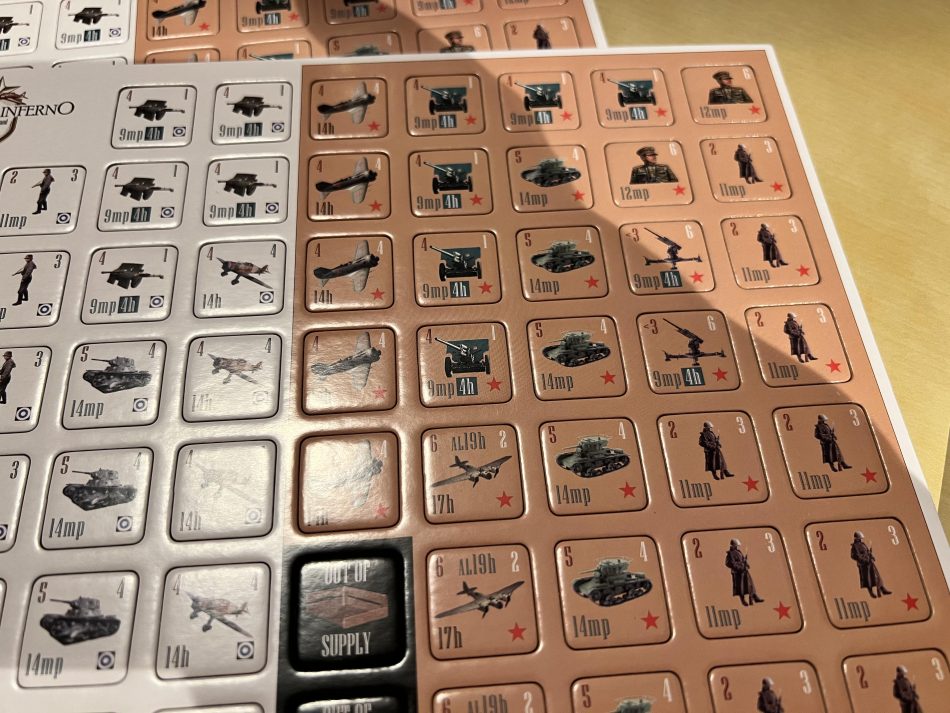
Having played the game a few times I realized that the conflict was a challenge, however, the game rules and mechanics are not that difficult. Many European games have problems when translating their rules into English. This is not a problem in Freezing Inferno, and I wonder if they developed the rules in English first.
The game revolves around what the game calls “National Military Capacity” which allows you to build new units or reinforce units in play. When a city gets captured the capacity for a player is adjusted. Control of the map is crucial for both players since the ability to make it to the end of turn eight requires a lot of resources.
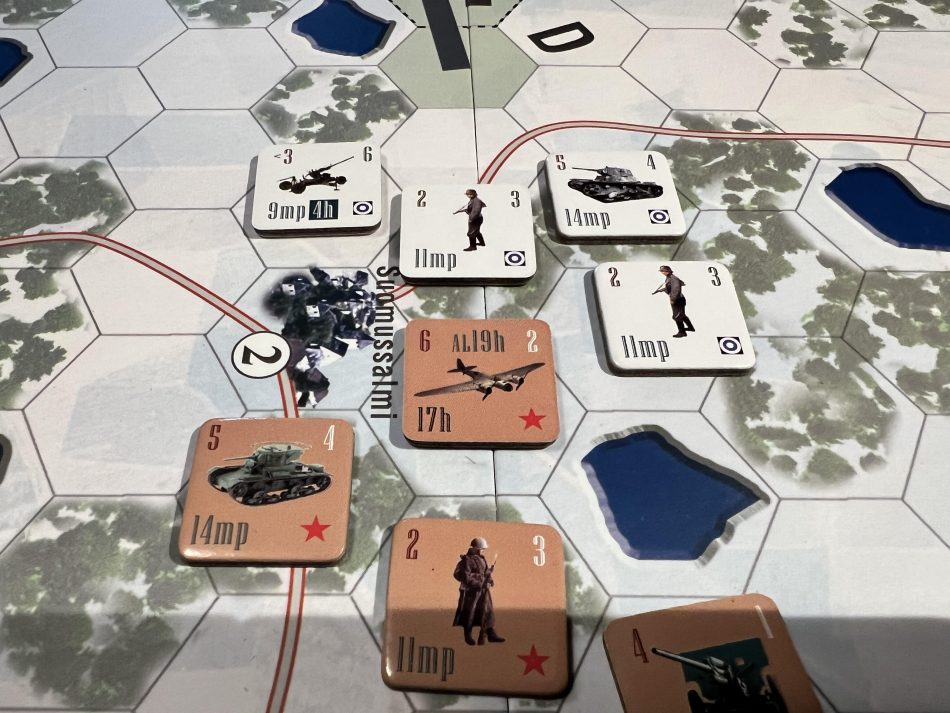
The units in the game represent infantry, armor, artillery, fighters, bombers, AA guns, and headquarters units. While I beat up on a lot of games for not having good air rules, Freezing Inferno really portrays airpower in an easy and slick manner that does not become the focus of the game yet plays a huge role when used properly. The same can be said about how supply works, it is not overdone but done well enough to make it something that a savvy player can use to their advantage.
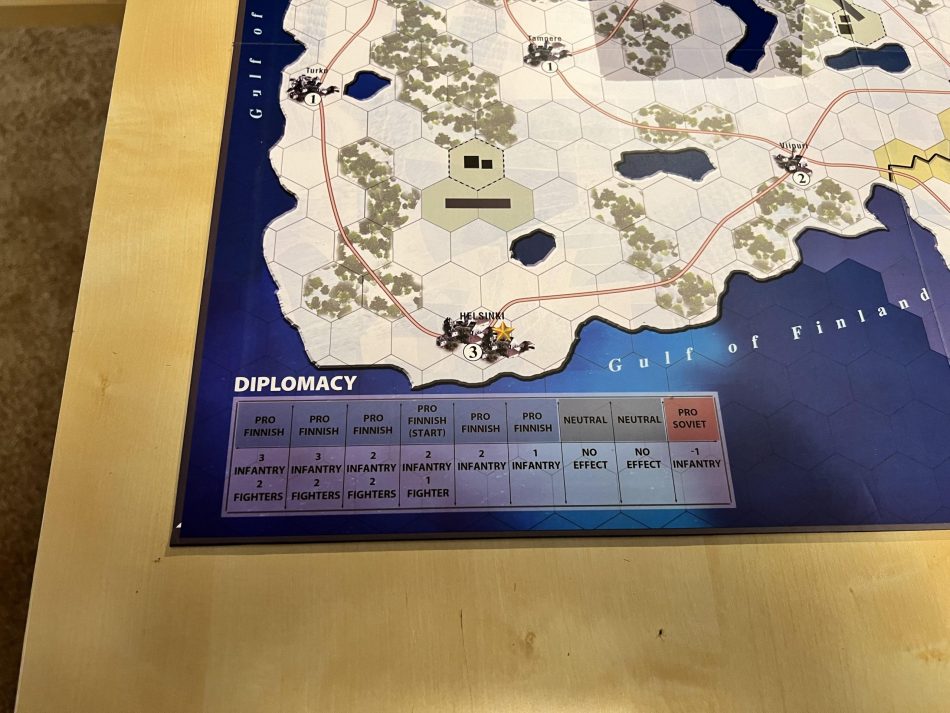
Combat is also innovative, where it can result in preventing a defending unit from conducting an attack during the following turn. There is one wrinkle here, that appeals to my love of statistics: how you can change the results by picking one of three different-sized dice (including a proprietary d20) before the start of the game.
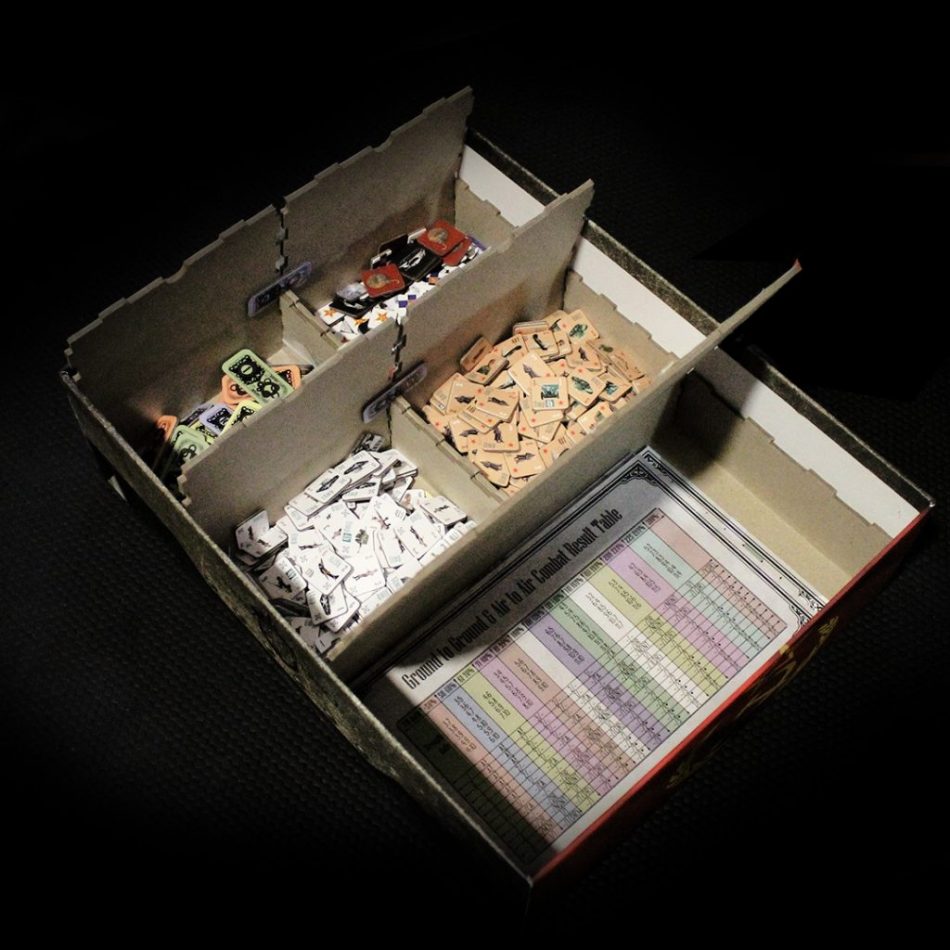
The other small details the game has is the ability to capture and use Soviet tanks and how the Soviets can make their tanks faster by removing the tracks and going on their wheels. The game also has a card mechanic where you draw a card depending on the game’s calendar and must play what is directed by the card.
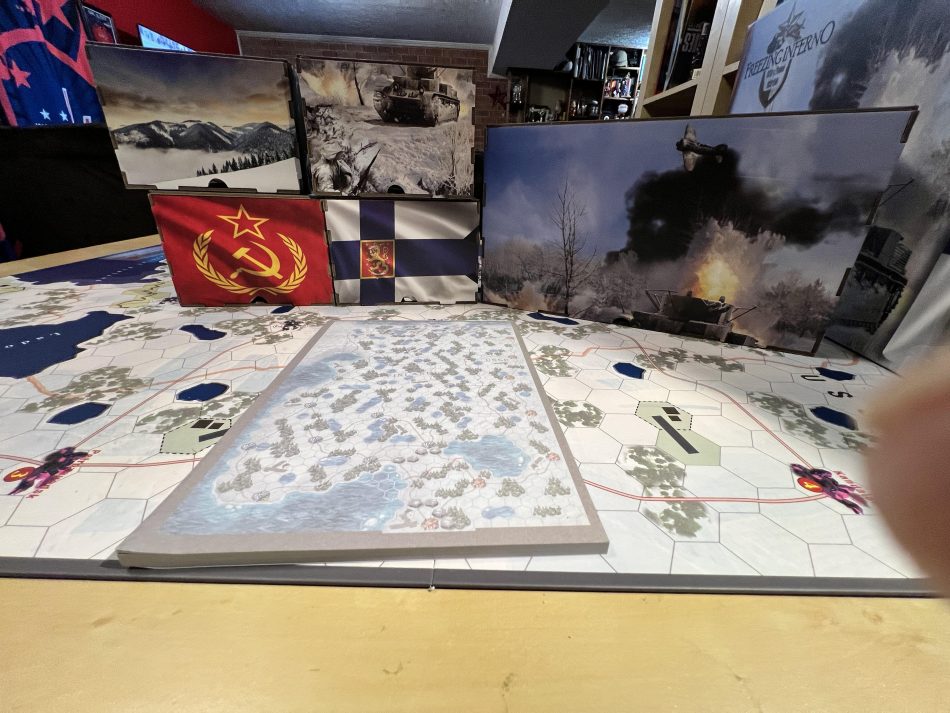
Each of my games went relatively quickly and each side has its benefits and challenges. The Soviet player must be aggressive and take risks, while the Finnish player must figure out where the next attack is coming from and plan to deal with it accordingly.
I found that the replay value of this game is very high due to all of the options and modules you have to choose from. I usually donate the games we get after we review them, but I want to play this one a few more times until I give someone else this great game that will both challenge them and create a very enjoyable experience.
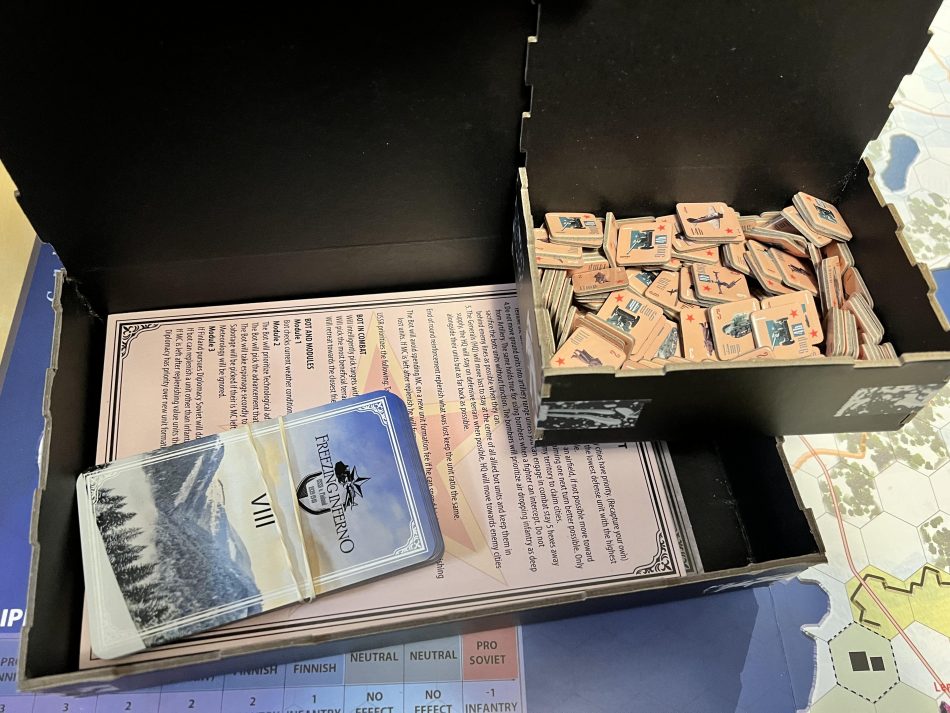
This game, much like March on the Drina, is a game that many gamers may not heard of. However, this is a game worthy of playing and adding to your collection.
The newest game from Princeps Games is about the Soviet-Japanese skirmishes at Khalkin Gol (which I want to play). This set of battles occurred just before Germany attacked the USSR. One thing Princeps’ three wargame titles have in common is how they are about unusual topics that are not gamed enough. I like the fact that the design team tackles such challenges. I wonder what unique conflict they will do next.
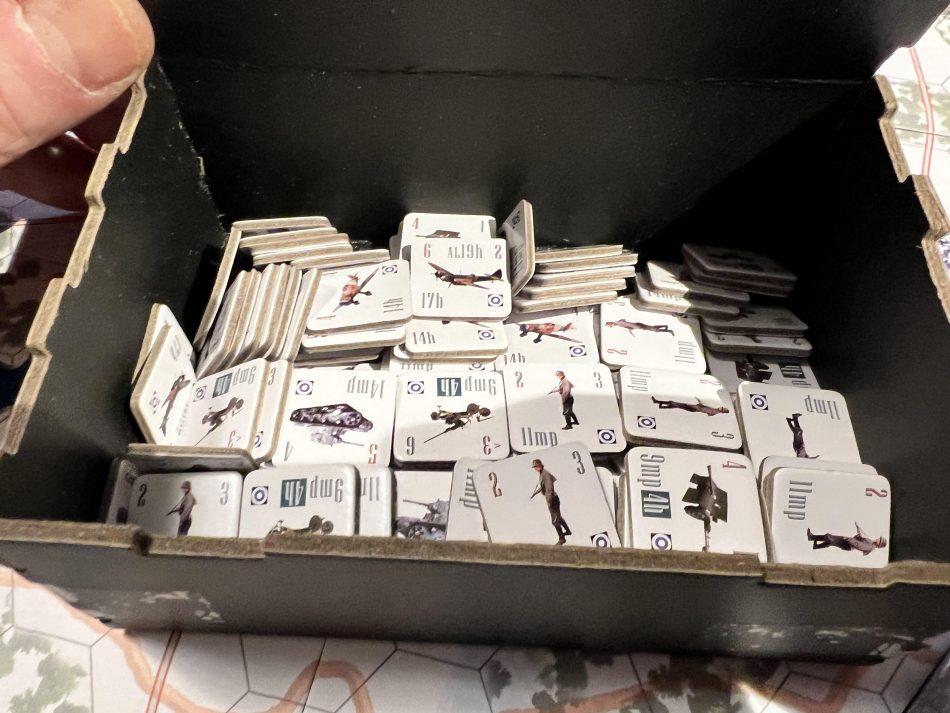
For playability, historicity, and production value I really recommend picking up Freezing Inferno.
